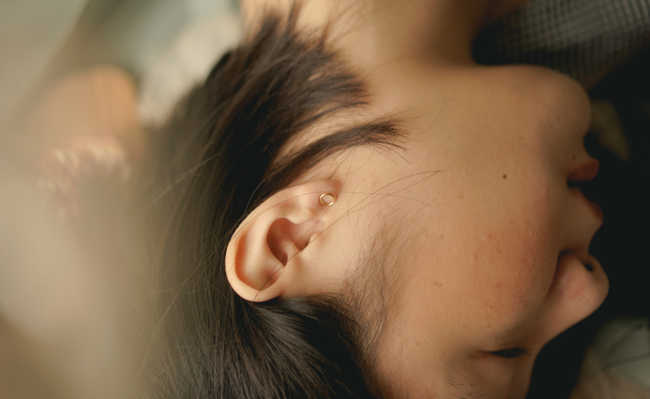How to safely clean your ear
It is necessary to be very careful when cleaning the ear, as the region is extremely sensitive

Edited and resized image by Jessica Flavia is available on Unsplash
Home ear cleaning is a frequent practice. Excessive wax blocks the ear making it difficult to hear, and then comes that urge to use a cotton swab, which is not safe. Check out tips on how to safely clean your ear:
Symptoms of impacted earwax
Ear wax, or cerumen, is a substance produced by the body in order to protect the ear from dirt, bacteria, fungi and other harmful elements. It is normally released naturally from the ear cavity through chewing and other jaw movements.
Often this natural process does not cause any discomfort. However, when it affects hearing and blocks the ear, there is what is called impacted cerumen.
Symptoms of this condition include:
- earache
- Buzz
- impaired hearing
- strong odor in the ear
- Dizziness
- Cough
The chance of developing impacted cerumen is greater if the person wears a hearing aid or ear plug. Elderly people and people with developmental disabilities are also at greater risk. The shape of the ear canal can make it difficult to clean the wax naturally.
The safest way to clean your ear is to dry the outside on the way out of the shower using a clean towel or cloth. And seek medical help from an otolaryngologist in case of impacted cerumen, as professionals have adequate instruments such as tweezers, suction and irrigation instruments, among others.
For homemade ear cleaning, the safest methods are:
damp cloth
Cotton swabs can push the wax further into the ear canal. Use cotton swabs only on the outside of the ear, or better yet, try cleaning the area with a warm, damp cloth.
Ear wax softener
Many pharmacies sell liquid ear wax softeners, which are usually composed of mineral oil, hydrogen peroxide, salts or glycerin.
Each type of earwax softener has a specific recommendation for use, which you can ask your pharmacist or read in the directions for use on the package.
Saline solution
Using a sterile syringe, gently apply saline to the affected ear. This method will be more effective if you put on wax softener 15 or 30 minutes before using the syringe. To avoid dizziness, warm the solution so that it is the same temperature as your body. But be very careful not to burn your ear! It's dangerous. Check the temperature before applying the solution.
what not to do
Most of the time it is not necessary to clean the ear. Do not put small objects like hairpins, cotton swabs or napkin corners into your ear at all, you could end up pushing the wax into deeper areas of the ear canal. And, once it builds up, it can cause impacted earwax framework.
The medical recommendation, including that found in the scientific journal Otolaryngology-Head and Neck Surgery, is that nothing smaller than the elbow should be inserted in the ear. This way you avoid hurting your eardrum and damaging your hearing forever.
You should not try to put solutions in the ear in cases of:
- Diabetes
- Compromised immune system
- hole in the eardrum
Ear plugs are another option you should avoid doing alone. The long cone-shaped candles are inserted into the ear canal and then lit to draw the wax upward with suction. But it's dangerous because, by yourself, you can get hurt by the fire or accidentally drip hot candle wax into your ear .
complications
A case of impacted earwax that has not received treatment can have implications. You can develop more ear irritation and even hearing loss. Wax can also build up to such a level that it can be difficult for your doctor to see into your ear and diagnose other problems.
Seek medical help if you experience tinnitus, reduced or muffled hearing, and pain in the ear region. These symptoms can signal other health conditions such as an infection that only a doctor or doctor can identify.
Good habits
- Do not insert small objects into the ear, as this may cause damage to the eardrum or impact wax;
- Limit your exposure to loud noises. Wear ear plugs when the noise gets too loud;
- Take periodic breaks when using your headphones and keep the volume low enough so that no one else can hear your music. Don't turn up the volume on your car's sound system too much;
- Dry your ears after swimming or showering to avoid the condition known as “swimmer's ear”. Use a cloth to wipe the outside of your ear and tilt your head to help remove any water that may have gotten in;
- Pay attention to any hearing changes that occur with the use of certain medications. If you notice changes, balance problems or ringing in your ear, seek medical help;
- See your doctor as soon as possible if you notice sudden pain, hearing loss or if you have an ear damage.
Adapted from MayoClinic and Healthline










